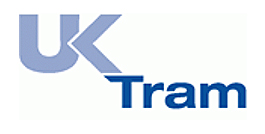New asset management tool will predict wear for light railways

Thu, 17 Dec 2015 15:02:00 GMT
The project is funded through UKTram’s Low Impact Light Rail scheme, supported by Innovate UK’s SBRI programme
 TRAMWAYS have made a big comeback in the UK and their viability and expansion will be aided by research at the University of Huddersfield aimed at maintaining safety standards while reducing life cycle costs.
TRAMWAYS have made a big comeback in the UK and their viability and expansion will be aided by research at the University of Huddersfield aimed at maintaining safety standards while reducing life cycle costs.
Experts have won more than £140,000 funding to develop a software-based asset management tool that will enable light railway operators to calculate the most appropriate rail wear limits for their system. This would mean longer intervals between maintenance and replacement, reducing disruption to passengers and costs to the operators, while maintaining safety levels.
 The research is being carried out at the University of Huddersfield’s Institute of Railway Research, which has developed expertise in computer modelling of the interface between rail vehicles and track. This will play a major part in the new project and there is also on-site collaboration with some of the UK’s busiest tramway systems.
The research is being carried out at the University of Huddersfield’s Institute of Railway Research, which has developed expertise in computer modelling of the interface between rail vehicles and track. This will play a major part in the new project and there is also on-site collaboration with some of the UK’s busiest tramway systems.
The project is headed by Dr Adam Bevan (pictured), who is the IRR’s Head of Enterprise. It includes Professor Jay Jaiswal, a metallurgist with a speciality in rail steels. Funding has been awarded through the UKTram’s Low Impact Light Rail scheme, which is supported by the UK’s innovation agency, Innovate UK, with £3m from its Small Business Research Initiative (SBRI). UKTram was established to provide a unified single voice for the UK light rail industry.
Although Blackpool has the only tramway to survive from the original Victorian phase, there are now eight new-generation systems in British urban areas. Three of them – in Manchester, the Midlands and Nottingham – are currently expanding.
But despite this new boom, there is currently no industry-wide, common set of standards covering rail wear limits and management of rail asset life. Engineers draw on their own experience and very often this was gained on mainline railways, so that standards are not optimised for light rail, said Dr Bevan. This can result in the specification of wear limits that are too conservative, so that rails are replaced prematurely; raising costs and increasing disruption on urban systems relied on by huge numbers of passengers daily.
Realistic maintenance schedules
 The project, to develop a software tool that will enable tramway and light rail operators to develop more realistic maintenance schedules, was one of fifteen projects awarded funding for a feasibility study. Following an assessment of the outcomes of this work, funding was awarded to progress to the demonstrator phase and trial the developed tools in real-life situations. This phase is due for completion in October 2016 and will deliver a software-based asset management tool and guidance document based on the operating conditions of the specific network. It will enable infrastructure managers to arrive at the optimum rail wear limits and to select the appropriate grades of rail steel for their systems.
The project, to develop a software tool that will enable tramway and light rail operators to develop more realistic maintenance schedules, was one of fifteen projects awarded funding for a feasibility study. Following an assessment of the outcomes of this work, funding was awarded to progress to the demonstrator phase and trial the developed tools in real-life situations. This phase is due for completion in October 2016 and will deliver a software-based asset management tool and guidance document based on the operating conditions of the specific network. It will enable infrastructure managers to arrive at the optimum rail wear limits and to select the appropriate grades of rail steel for their systems.
The developed tool will be made available to UKTram members and the University’s Institute of Railway Research will provide technical consultancy to customise it for the specific conditions of the network. The software and supporting technical consultancy will also be offered on a commercial basis to the large numbers of tramways and light railways around the world.
In Europe alone, there are currently around 150 systems, with 800 lines covering more than 7,000 kilometres. This means that the Institute – based in a purpose-built suite of labs and offices currently undergoing major expansion – will be able to establish itself as a leading global consultancy for light railway operators, complementing its reputation in the field of mainline rail research and innovation.
- The SBRI programme uses the power of government procurement to drive innovation. It provides opportunities for innovative companies to engage with the public sector and gain contracts to solve specific problems. Competitions for new technologies and ideas are run on specific topics and aim to engage a broad range of organisations. SBRI enables the public sector to engage with industry during the early stages of development, supporting projects through the stages of feasibility and prototyping. Further information can be found at https://sbri.innovateuk.org/.







